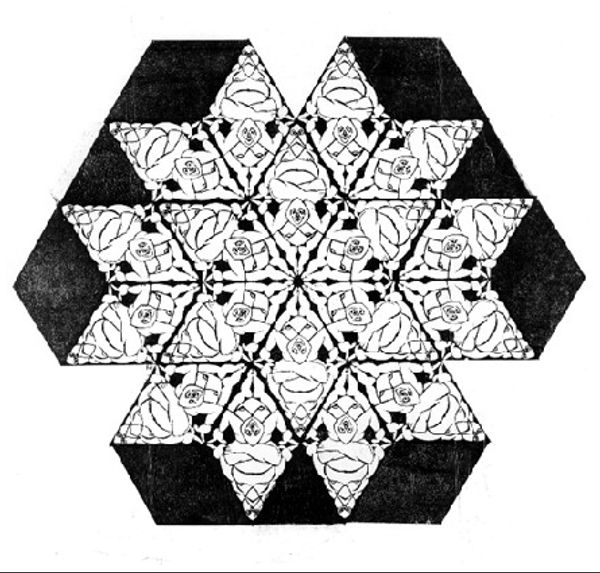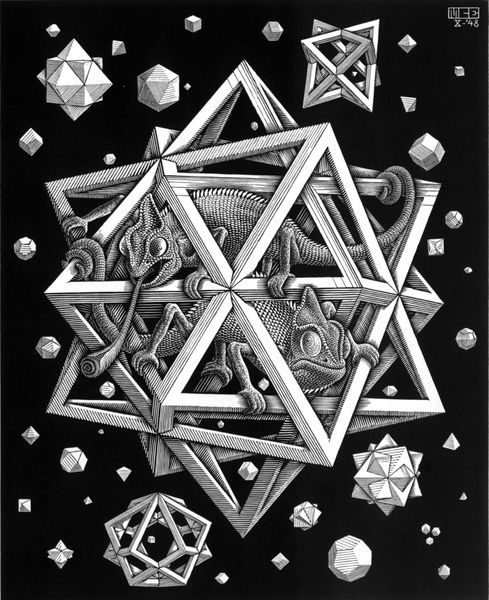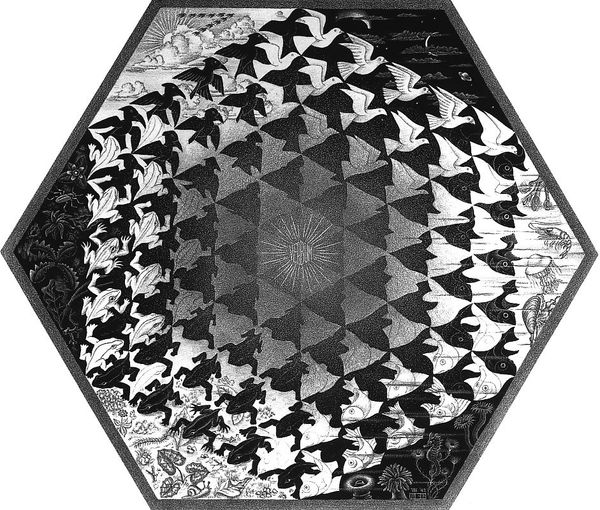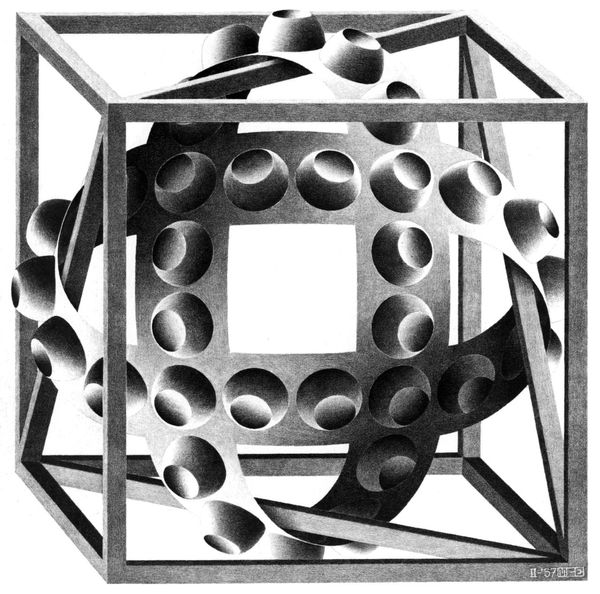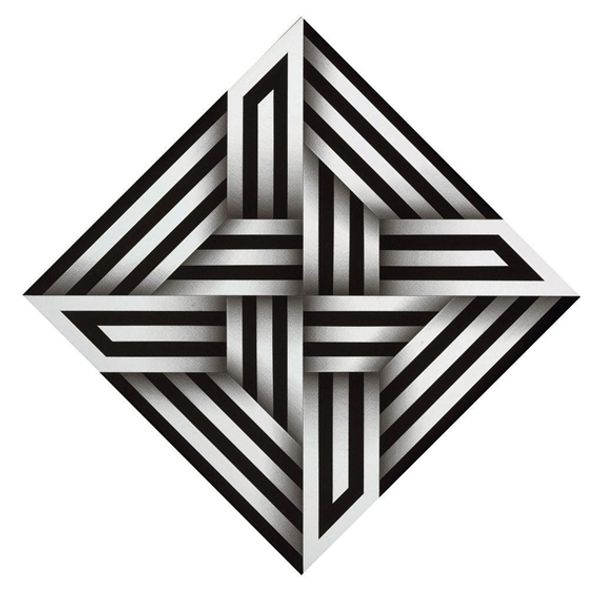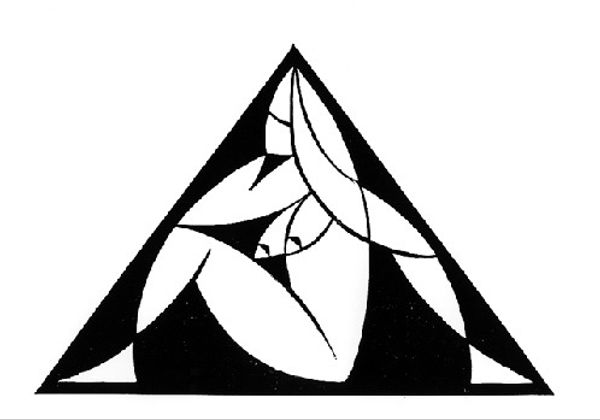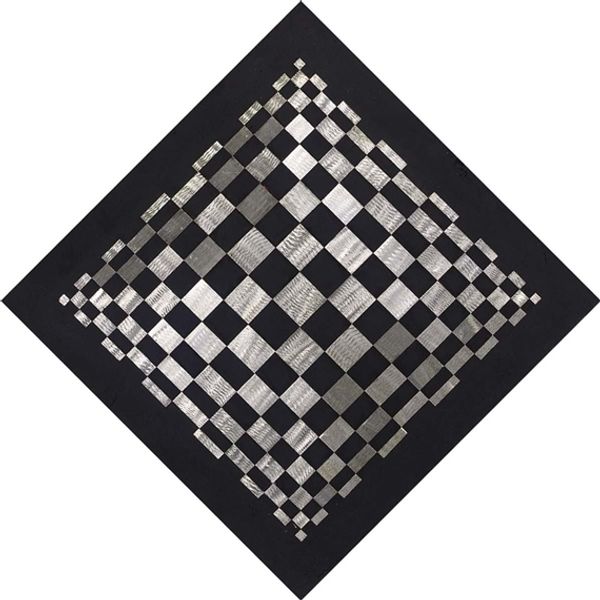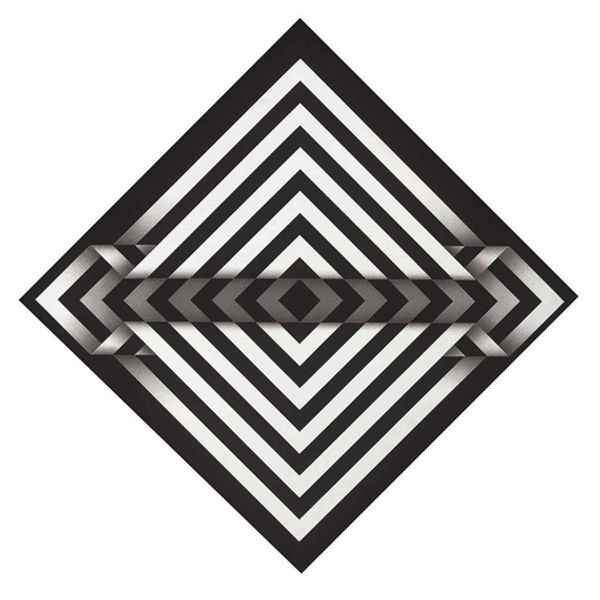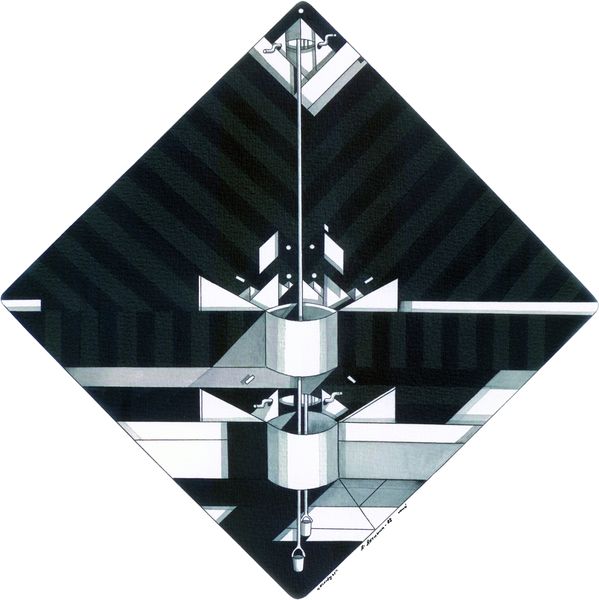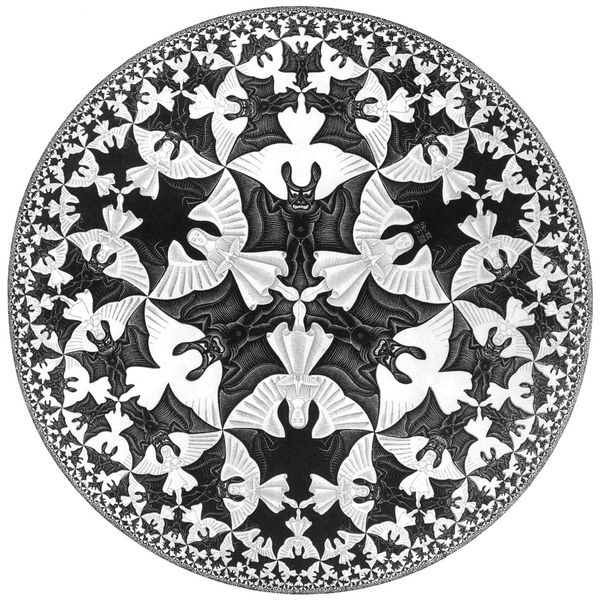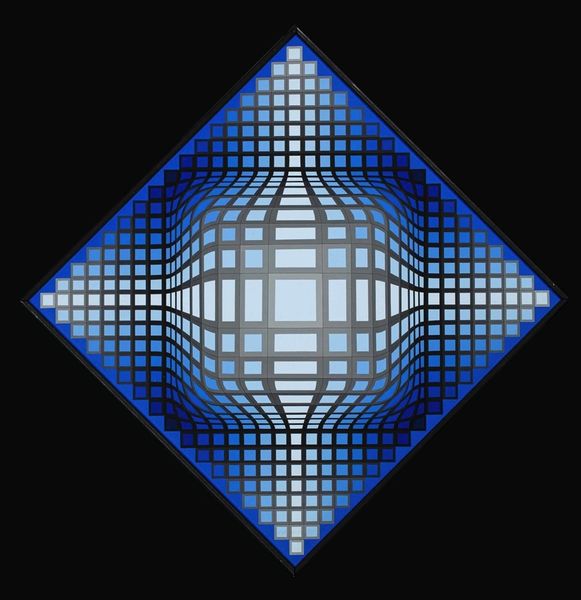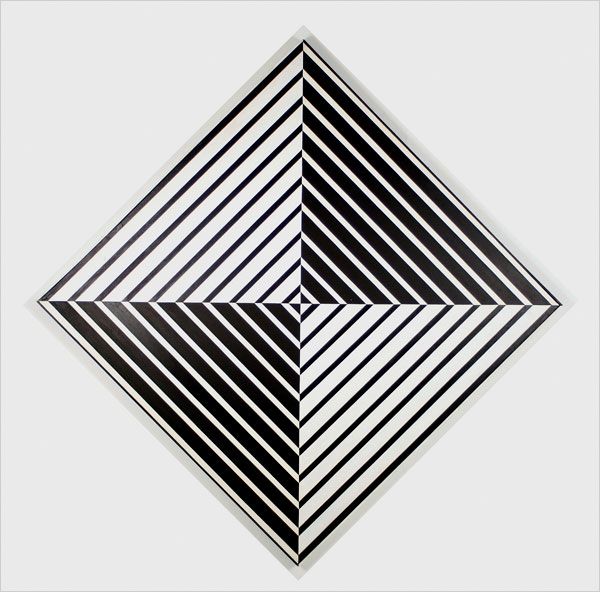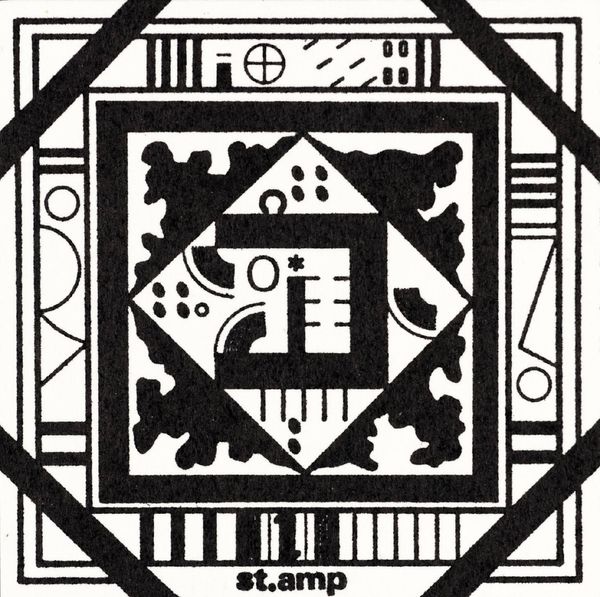
#
cubism
#
geometric
#
geometric-abstraction
#
line
Copyright: M.C. Escher,Fair Use
Curator: I am immediately struck by the visual complexity, but more so by the tactile qualities of this work. It gives off an impression of materiality, texture, and almost challenges me to construct it. Editor: I agree it begs to be touched and manipulated. You're observing "Three Intersecting Planes" from 1954, a wood engraving by the great M.C. Escher. And like much of his work, it challenges our perception. What symbolic resonance do you detect here, Curator? Curator: Well, Escher loved to play with paradox and the nature of reality. Here, within this large triangular shape, you have individual blocks intersecting in ways that seem illogical at first glance, referencing geometry, but then you get the pyramids alluding to deeper themes: perhaps hierarchy, knowledge, or even spiritual ascent. The black and white, the contrasts—there's a moral dimension, I believe. Editor: I notice Escher's chosen medium – wood engraving. I find it fitting considering the geometric objects which are represented here. He was really pushing against any separation of art and design in his era, wasn’t he? The piece required physical labor, carefully cutting into the wood, reflecting both planning and execution. There's an intellectual rigor evident in every line. Curator: Absolutely. And beyond just the rigor, that process is really crucial. He didn’t want it to look like a computer had made it, and by grounding that intellectual puzzle in a physical art and a design discipline of manual skill, this communicates with something deep in us. Editor: It speaks to something beyond logic alone. There is perhaps the cultural association with architecture, considering that pyramid form, yet presented in a wholly disorienting way. Escher creates order from chaos. Or does he create the illusion of order from calculated chaos? Curator: Exactly! We're back to the Escher paradox again. A visual manifestation of an impossible idea and perhaps that makes it the emblem of how we come to our beliefs in the first place. Editor: Yes, I see now how the labor intensive design is embedded in cultural significance. This piece resonates long after it's left the workshop, and invites us into Escher’s constructed reality.
Comments
No comments
Be the first to comment and join the conversation on the ultimate creative platform.
